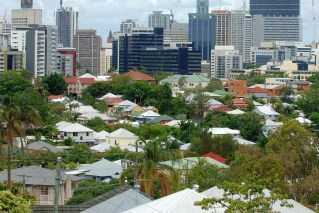Rapid jobless hike among key fears of Reserve Bank
The heat is starting to come out of the labour market but minutes from the latest Reserve Bank of Australia meeting show concerns that if unemployment starts rising, it will move fast.

Governor of the Reserve Bank of Australia (RBA) Michele Bullock. (AAP Image/Bianca De Marchi)
The RBA remains alert to the risk that unemployment could rise quickly once it starts climbing, as it has done in the past.
Spelling out the thinking behind keeping interest rates on hold at 4.35 per cent in June, which was a universally expected call, the central bank board said falling job vacancies could be indicative of a weaker-than-expected labour market.
“Moreover, the unemployment rate could rise quickly once it did start to rise, as had occurred in the past,” the minutes from the June meeting said.
The labour market has proved remarkably resilient to the economic slowdown underway as higher interest rates work to slow demand and bring down inflation.
The unemployment rate actually fell again in May, to four per cent from 4.1 per cent in April.
But the jobless rate is easing gradually and other indicators, such as job advertisements, vacancies and hours worked, further suggest heat is slowly coming out of the labour market.
Both the case to lift interest rates and to leave them on hold was canvassed at the meeting, as flagged by Governor Michele Bullock already.
Economists broadly expected the final call to leave interest rates unchanged at 4.35 per cent in June, where the cash rate has been lodged since November.
Feeding into the case to hike was concern inflation was “taking longer to abate than had previously been assumed”.
The meeting pre-dated a hotter-than-expected monthly inflation print, which prompted economists to warn the wait for cuts could be longer than thought and the risk of another rate hike was rising.
“Several pieces of information” could also imply demand was holding up better than expected, the minutes said.
Revisions to the consumption profile in the national accounts showed households had been spending more and saving less than earlier estimates.
A strengthening global economic cycle and easing financial conditions for big businesses could further support demand in Australia, board members speculated.
“Collectively, these developments could limit the extent to which current policy settings were sufficient to bring aggregate demand back into line with aggregate supply,” the minutes stated.
Yet the case to keep the cash rate steady was broadly informed by the view “the economy was still broadly tracking on a path consistent with returning inflation to target in 2026, while preserving as many of the gains in employment as possible”.
“Inflation had fallen significantly from its peak in late 2022, inflation expectations were assessed to be consistent with the board’s target and there was evidence that the pace of wages growth had peaked in late 2023,” the minutes read.
Meanwhile, inflation expectations tracked in ANZ and Roy Morgan’s weekly consumer confidence survey clocked the largest increase in nine months following the hotter-than-expected May consumer price print.
The central bank wants to keep household expectations of where prices are moving in the future contained because these beliefs can influence the actual trajectory of inflation.












